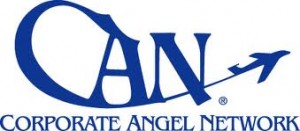Renowned Beechcraft Bonanza Flies Successful Mission with Experimental Autolanding Device
Written by thomas · Filed Under Aeronautics NewsJuly 28, 2009
Industry-first test with Rockwell Collins could enhance safety of future commercial aircraft
OSHKOSH, Wis. (July 28, 2009) – Hawker Beechcraft Corporation (HBC) today announced the successful flight and landing of its renowned Beechcraft Bonanza with an experimental autolanding device demonstrated in collaboration with Rockwell Collins. This industry-leading commercial aircraft technology, originally developed for unmanned air systems (UAS), offers the promise of airplanes that can safely land themselves should the pilot become incapacitated during flight. The tests were part of HBC’s program to explore and develop advanced flight control technologies for future use in general aviation airplanes.
“HBC has a longstanding history of developing leading technologies for general aviation aircraft,” said Ed Petkus, HBC vice president, Product Development and Engineering. “We are continually looking for ways to improve the safety of our product and bring added value to our customers. The successful flight demonstrations and teamwork with Rockwell Collins have the potential to do just that.”
The collaborative work with Rockwell Collins began last year. A modified Bonanza conducted a series of hands-off landings during a test campaign at HBC’s headquarters in Wichita, Kan. The test Bonanza was equipped with an experimental fly-by-wire flight control system. The airplane carried a crew of three to observe and monitor system operation and to provide a backup control capability. More testing is planned for the coming months.
“This project with Hawker Beechcraft shows what is possible by leveraging our UAS technology to potentially serve as a digital parachute in emergency situations,” said David Vos, Rockwell Collins senior director, Control Technologies. “While we are still in a demonstration phase, we’re excited about our continued work with Hawker Beechcraft as we look for opportunities to further enhance safety in a future airspace where manned, unmanned and optionally manned aircraft can coexist.”
The flight guidance and control cues during the tests were provided by a Rockwell Collins Athena 411. Various products in the Athena family are already widely used in the unmanned aerial vehicle world. The Athena 411 combines INS/GPS, AHRS, air-data system and flight-control capability in a single compact, reliable and relatively low-cost unit. For this project, Rockwell Collins engineers customized the Athena 411 flight-control system for the Bonanza platform while HBC engineers integrated the Athena 411 into the airplane’s fly-by-wire system.
The Bonanza is the most prestigious high-performance single-engine piston in the market with more than 60 years in continual production – the longest in the industry. While celebrating the successful history, HBC also remains focused on the future by utilizing the latest technologies. HBC exemplified its technology leadership earlier this year when it marked the industry-first test flight on sustainable fuel. In April, the company announced the successful test flights of its certificated Bonanza G36 on unleaded aviation fuel and Swift Sustainable Fuel. HBC leads the industry as the first major aircraft manufacturer to accomplish this using Swift Fuel.
» Próximo Post - Ecuador plans to rebuild 10 airports
« Post Aneterior - BQB and SOL waiting for authority to serve Madrid from Montevideo
Comments
¿Tiene algo que decir?
You must be logged in to post a comment.







